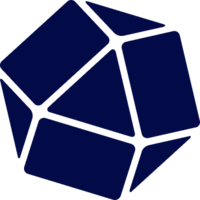Our great sponsors
-
InfluxDB
Power Real-Time Data Analytics at Scale. Get real-time insights from all types of time series data with InfluxDB. Ingest, query, and analyze billions of data points in real-time with unbounded cardinality.

The conclusion is pretty weird to me.
Go does rely on monomorphization for generics, just like C++ and Rust. The only difference is that this is an implementation detail, so Go can group multiple monomorphizations without worrying about anything else [1]. This form of hybrid monomorphization is being increasingly common, GHC does that and Rust is also trying to do so [2], so nothing special for Go here.
On the other hand, explaining variance as a lifted polymorphism is---while not incorrect per se---also weird in part because a lack of variance is at worst just an annoyance. You can always make an adopter to unify heterogeneous types. Rust calls it `Box`, Go happens to call it an interface type instead. Both languages even do not allow heterogeneous concrete (or runtime) types in a single slice! So variance has no use in both languages because no concrete types are eligible for variance anyway.
I think the conclusion got weird because the term "subtyping" is being misused. Subtyping, in the broadest sense, is just a non-trivial type relation. Many languages thus have a multiple notion of subtyping, often (almost) identical to each other but sometimes not. Go in particular has a lot of them, and even some relation like "T implements U" is a straightforward record subtyping. It is no surprise that the non-uniform value representation has the largest influence, and only monomorphization schemes and hetero-to-homogeneous adapters vary in this particular group.
[1] https://github.com/golang/proposal/blob/master/design/generi...
[2] https://rust-lang.github.io/compiler-team/working-groups/pol...
...and Typed Racket is a really powerful type system (see refinement types[4]). So, I thought it's just a matter of time for Clojure to get to that level of power and support. It should be much easier to do this to Clojure than to Ruby, given that you have a working example of how to do it well. So I'm really surprised Clojure isn't gradually typed by now, with most of the code being annotated and type-checked at compile time.
[1] https://github.com/clojure/core.typed
[2] https://github.com/typedclojure/typedclojure
[3] https://github.com/typedclojure/typedclojure/blob/main/examp...
[4] https://docs.racket-lang.org/ts-reference/Experimental_Featu...
...and Typed Racket is a really powerful type system (see refinement types[4]). So, I thought it's just a matter of time for Clojure to get to that level of power and support. It should be much easier to do this to Clojure than to Ruby, given that you have a working example of how to do it well. So I'm really surprised Clojure isn't gradually typed by now, with most of the code being annotated and type-checked at compile time.
[1] https://github.com/clojure/core.typed
[2] https://github.com/typedclojure/typedclojure
[3] https://github.com/typedclojure/typedclojure/blob/main/examp...
[4] https://docs.racket-lang.org/ts-reference/Experimental_Featu...